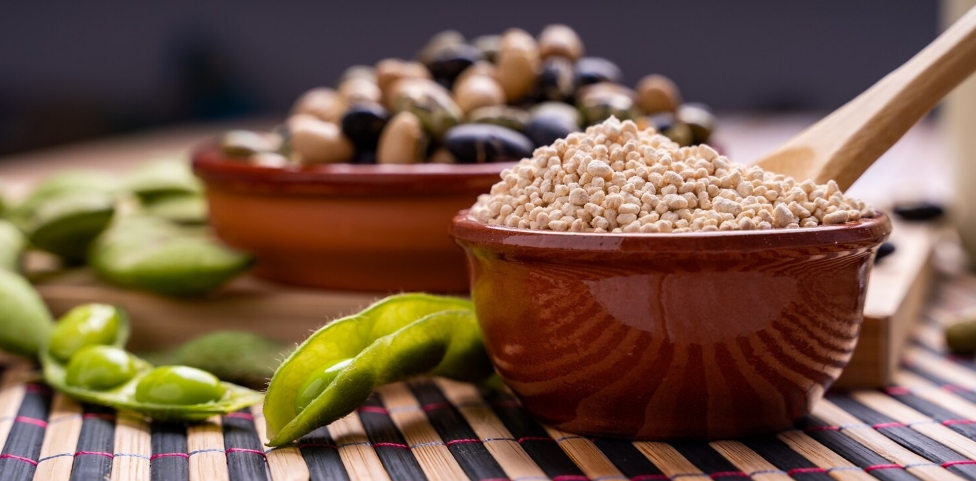Difference Between Edamame and Soybeans
Soybeans, a member of the legume family, are traditionally eaten in Asia and have now become popular in Western countries as well. Soy beans look like green beans, except they are flatter and are a duller shade of green, with fine hairs on the pods.
The difference between edamame and soybeans is that edamame beans are harvested when they are young and served fresh, often steamed while still encased in their pod. You eat them shelled. The tender green soft seeds make a nutritious snack or main vegetable.
Soybeans that are left to ripen turn into hard dry beans, which are typically yellow but can be black or brown. Mature soybeans cannot be eaten raw and must be cooked or fermented.
Soybeans are mostly used for oil in many processed foods such as salad dressing, margarines and baked goods. They are also used to make soy products such as tofu, soy flour, soy sauce, miso, soy milk and soy burgers. Whole soybeans can also be soaked and dry roasted for a soy-nut snack or cooked for addition to soups, sauces and stews.

Nutritional Content: Edamame vs. Soybeans
Soy offers many health benefits — most important, it's a complete source of protein. This means that soybeans contain all of the essential amino acids needed to produce the protein necessary for your body to function properly. This makes edamame beans and soybeans a cornerstone of many vegetarians' and vegans' diets to fulfill their protein requirements.
Soybeans and edamame contain important omega-3 fats but are low in saturated fat and have no cholesterol. Per 100 grams, edamame has 9 grams of total fat; raw mature soybeans have 19.9 grams.
Of the total fat content, 100 grams of edamame beans contain 1,981 milligrams of monounsaturated fat and 5,064 milligrams of healthy polyunsaturated fat; whole raw soybeans contain 4,404 and 11,255 milligrams respectively.
Author By Gord Kerr
https://www.livestrong.com/article/447704-differences-between-soy-beans-edemame/





